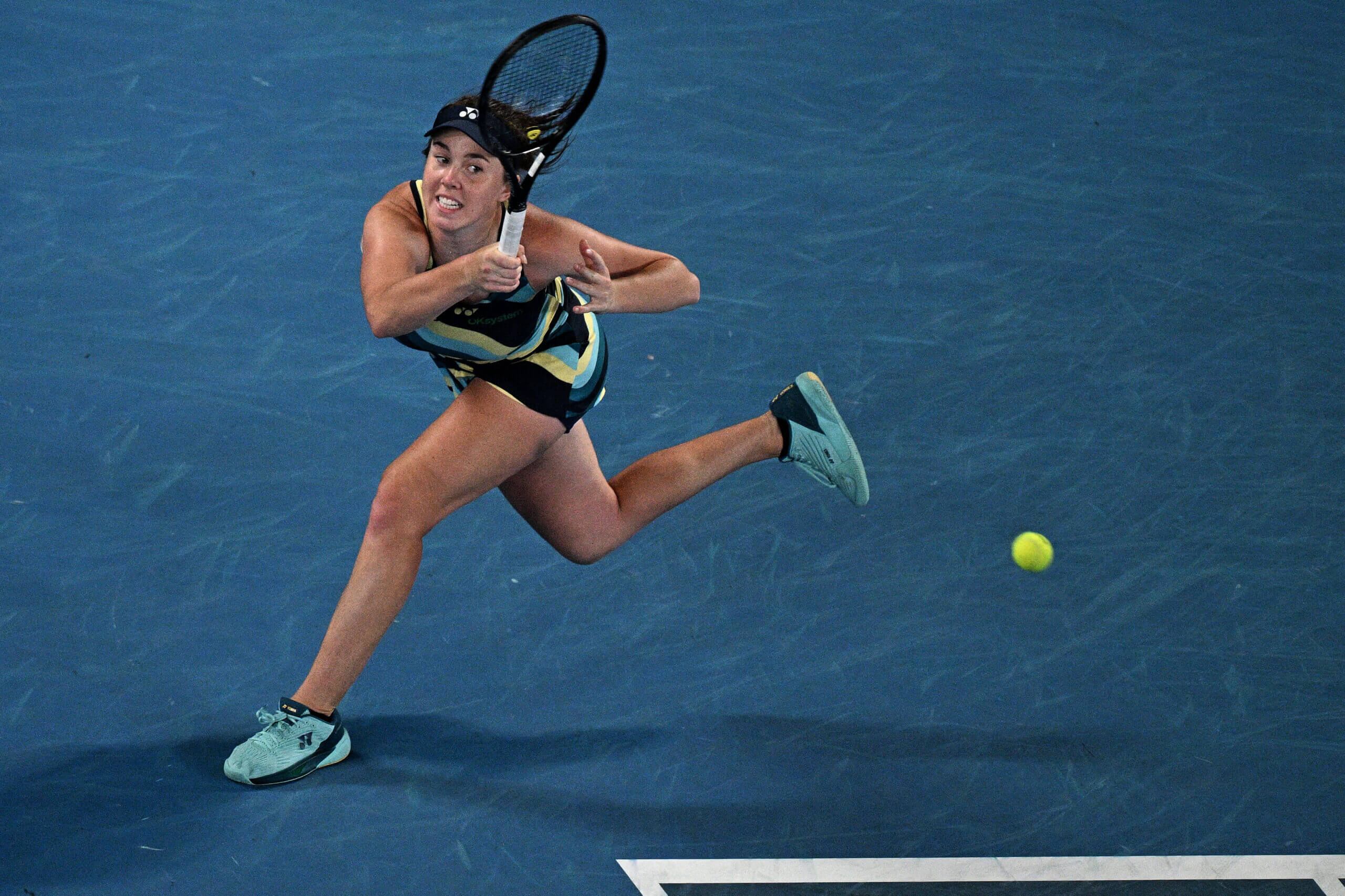Iga Swiatek, the world number one, is out of the Australian Open.
Linda Noskova of the Czech Republic came back from a set down to beat Swiatek in the Rod Laver Arena, 3-6, 6-3, 6-4.
For Swiatek, a four-time Grand Slam champion, it was her earliest exit from a slam since her second-round loss at the U.S. Open back in 2020, when she was still a bookish and promising teenager deciding whether she wanted to pursue tennis for the long term or go to college.
Advertisement
For Noskova, 19, the win was by far the biggest of a promising career. She is one of a slew of young Czech women crowding the top 50 of the women’s game.
Still, for nearly two years, against all but a few opponents, Swiatek has been the determining factor in the matches she plays. The 22-year-old rarely loses when she is strong and steady, which she usually is against someone younger, less experienced and without the Grand Slam pedigree that she has, dismissing them without mercy and piling up 6-0(bagels) and 6-1(breadsticks) sets by the dozen
That Swiatek was missing in action in Melbourne this year. Sofia Kenin, the 2020 champion, pushed her in the first round. Danielle Collins, the 2022 finalist, had her down late and came within five points of knocking her out in the second round before Swiatek climbed out of her hole and stormed to the win. She said in her mind she was already at the airport when she was down in the third set.
Then came Noskova. If not dominant, Swiatek seemed in control early. But in the second set, Noskova found her footing and started moving Swiatek around the court, forcing her to run to her usually lethal forehand rather than being able to dig in fire at the lines. Liege Collins and Kenin, Noskova attacked Swiatek’s soft second serve.

Linda Noskova pulled off a major upset (Anthony Wallace/AFP via Getty Images)
Noskova got the decisive break of serve, in the pivotal seventh game of the third set as Swiatek sent one forehand sailing long and another into the middle of the net. She put her head down and walked quickly to her chair for the changeover, then hustled to the far corner of the court for a quick consultation with her coach and sports psychologist before Noskova served to start the next game.
The advice was no match for Noskova, who nailed two lusty backhands to get within game of the finish line.
Noskova finished it with a big first serve to Swiatek’s forehand. Like so many before, it sailed long. She buried her eyes in her hands and jogged to the net to shake Swiatek’s hand.
Advertisement
“I didn’t really think it would end up like this,” Noskova said, in what is her first year in the main draw of the Australian Open.
Noskova added she was shaking between points in the final game but steadied herself to serve her 11th ace on the penultimate point.
What happened to Swiatek – and where does this leave the women’s draw?
Swiatek was in the midst of an 18-match win streak and had not lost a match since late September. Her departure from the tournament leaves a massive gulf in the top half of the draw, where seeds have been dropping throughout the first week.
Zheng Qinwen of China, the No. 12 seed is the highest seed left in what was once Swiatek’s half. The bottom half, meanwhile, still includes Aryna Sabalenka, the defending champion, Coco Gauff, the winner of the last Grand Slam, and Mirra Andreeva, the 16-year-old Russian upstart.
Even as she reigned as the world’s top player for a year and a half, Swiatek was never the game’s coolest customer. By her own admission, she struggled with the weight of the No. 1 ranking during her first stint at the top of the game. That ended after the U.S. Open. Liberated from the pressure of living up to her ranking, Swiatek began to play with a new freedom, swinging more loosely, though just as hard, and enjoying her time on the court more.
She relaxed for much of the brief off-season, keeping an open schedule free of too many obligations, and returned to play for Poland in the United Cup, the mixed team event, in late December.
But her draw at the year’s first Grand Slam prevented her from playing herself into top form as she often has before. And she is still less comfortable on the slick hard courts of Melbourne Park than she is on her favorite surface, red clay, or on the slower hard courts of the U.S. Open, which she won in 2022.

GO DEEPER
Medvedev’s 3.40am finish is latest absurd example of why tennis has to change
(Cameron Spencer/Getty Images)
